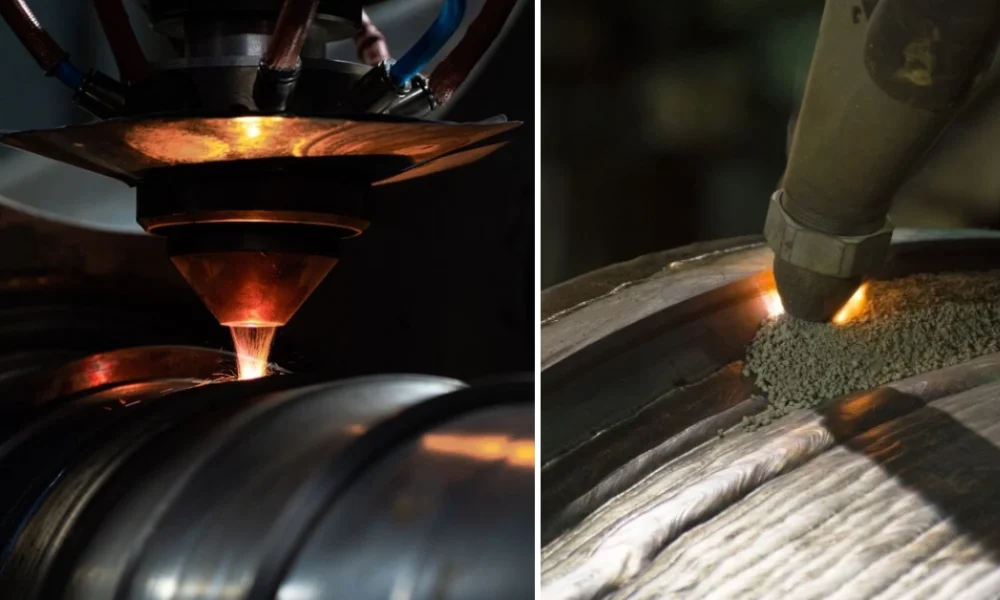
Clad Welding vs. Overlay Welding: What’s the Difference?
The Difference Between Clad Welding vs. Overlay Welding comes down to their purpose and how the metal layers are applied. Clad welding adds a thin, protective layer to prevent corrosion and extend the life of new equipment, while overlay welding builds a thicker layer to repair or reinforce worn surfaces. Both methods boost strength and durability, but they’re used in different situations depending on whether the goal is protection or restoration.
In industries where equipment operates under extreme temperatures, corrosive environments, or high mechanical stress, protecting structural components is critical. Two techniques often used to enhance durability and extend equipment life are clad welding and overlay welding. Although the terms are sometimes used interchangeably, they refer to different processes with distinct purposes. Understanding the differences between them can help engineers, operators, and maintenance teams select the right method for their application.
Clad welding
Clad welding, also known simply as cladding, involves bonding a corrosion-resistant or wear-resistant layer of metal onto a base material. This is typically done to provide long-term protection while maintaining the strength and cost benefits of a more economical substrate, such as carbon steel. Industries like petrochemical, oil and gas, power generation, and chemical processing often rely on clad surfaces to improve equipment performance without replacing entire components with high-alloy metals.
The key advantage of clad welding lies in its ability to combine two materials into one efficient system: a durable outer layer and a strong, cost-effective base metal. This approach not only increases service life but also improves resistance to corrosion, abrasion, and chemical attack. Clad welding is frequently used on pressure vessels, piping, reactors, storage tanks, and distillation columns—components that must endure harsh operating conditions for decades.
Overlay welding
Overlay welding, on the other hand, typically focuses on adding a thicker layer of material to restore worn surfaces or enhance mechanical wear resistance. While cladding is often part of the original fabrication process, overlays are sometimes applied during maintenance or refurbishment. Overlay welding can use similar materials, like stainless steel or nickel-based alloys, but the intent is usually more focused on rebuilding or reinforcing surfaces rather than creating a corrosion-resistant bond layer.
One of the core differences between the two methods lies in application thickness. Clad welding usually involves a thinner, uniform layer designed primarily for protection. Overlay welding can involve much thicker deposits depending on the severity of wear or the required strength. Additionally, clad welding emphasizes metallurgical bonding to ensure long-term reliability, while overlay welding may focus more on restoring dimensional accuracy.
Quality control is essential in both processes. Clad welding requires precise heat control and proper technique to ensure full bonding between the clad layer and the substrate. Overlay welding demands consistent deposition and strong fusion to guarantee the repaired area can withstand operational loads. Non-destructive testing methods—such as ultrasonic testing, dye penetrant inspection, and radiography—are common for verifying weld integrity.
Ultimately, both clad welding and overlay welding serve important roles in heavy industrial fabrication. Clad welding is best suited for new equipment that requires long-term corrosion or heat protection, while overlay welding is often used for restoring worn components or adding extra durability where needed. Understanding how each process works helps facilities make smarter decisions about fabrication, repair, and life-cycle management of critical assets.
Conclusion
Understanding the Difference Between Clad Welding vs. Overlay Welding helps companies choose the right method for long-lasting performance. Clad welding protects new equipment from harsh conditions, while overlay welding rebuilds and strengthens parts that have already worn down. By knowing when to use each one, industries can save money, reduce downtime, and keep their equipment running safely and smoothly.
